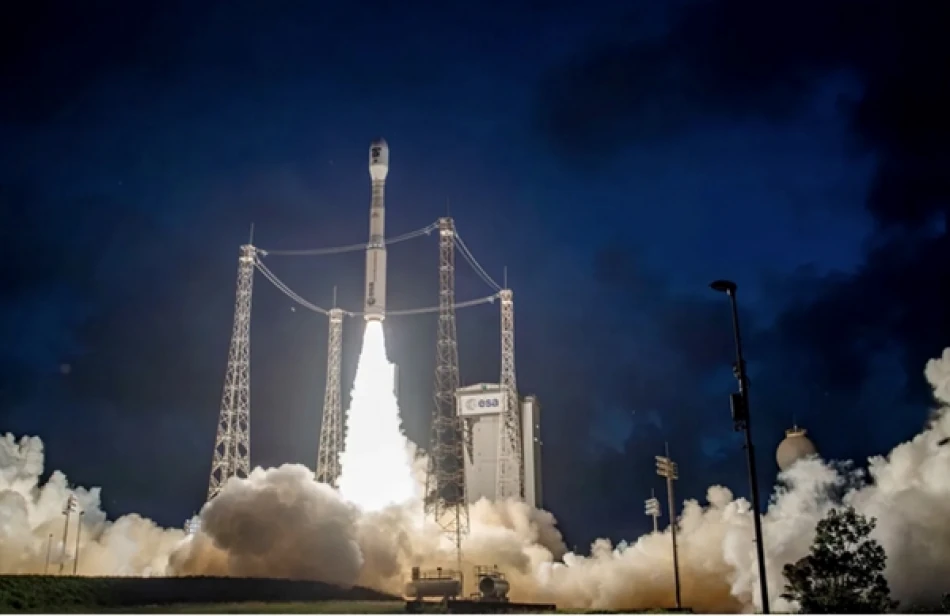
Successful Launch of 'Vega C' Rocket in French Guiana Boosts Space Exploration
Europe's Vega-C Rocket Successfully Deploys Climate Monitoring Satellites in Strategic Space Push
Europe's small-lift Vega-C rocket launched four advanced Earth observation satellites from French Guiana on Friday night, marking a significant step in the continent's efforts to maintain autonomous space access while advancing climate monitoring capabilities. The mission deployed cutting-edge 3D mapping technology and carbon dioxide tracking systems that could reshape how scientists monitor global warming over the next decade.
Mission Details and Technology Breakthrough
The Vega-C rocket lifted off precisely at 23:03 local time (02:03 GMT) from the Kourou Space Center, carrying a sophisticated payload designed for long-term Earth observation. Four CO3D satellites, developed for Airbus Defence and Space and France's National Centre for Space Studies (CNES), will create high-precision three-dimensional maps of Earth with an operational lifespan of approximately eight years.
The mission also carried MicroCarb, a specialized satellite designed to map carbon dioxide sources and sinks across the planet. This technology represents a crucial advancement in climate science, offering unprecedented precision in tracking greenhouse gas emissions and absorption patterns globally.
Strategic Importance for Climate Science
"This tool is essential for understanding the climate warming phenomenon," said David Cavailloles, CEO of Arianespace, during the pre-launch presentation. MicroCarb's five-year operational timeline positions it as a cornerstone for climate research during a critical period when nations are implementing ambitious carbon reduction targets.
Europe's Space Independence Strategy
This launch represents more than scientific advancement—it's a strategic assertion of European space autonomy. With geopolitical tensions affecting international space cooperation and commercial launch costs fluctuating dramatically, Europe's ability to deploy its own satellites using domestic rockets has become increasingly valuable.
The mission marks the second Vega-C launch and the third overall launch from Kourou this year, demonstrating Europe's commitment to maintaining regular launch cadence. This consistency is crucial for satellite operators who require predictable access to space for constellation deployment and replacement.
Competitive Positioning Against Global Players
While SpaceX dominates the commercial launch market with its reusable Falcon 9 rockets, Europe's Vega-C fills a specific niche for smaller payloads requiring precise orbital insertion. The rocket's capability to deploy satellites into different orbits during a single mission—as demonstrated with the CO3D and MicroCarb satellites—offers flexibility that larger rockets cannot match cost-effectively.
Market Implications and Future Outlook
The successful deployment positions European space companies to compete more aggressively in the growing Earth observation market, projected to reach $8.3 billion by 2030. High-resolution 3D mapping services are increasingly demanded by urban planners, agricultural companies, and defense contractors seeking detailed terrain analysis.
For investors, this mission validates Europe's space technology stack at a time when satellite data services are becoming essential infrastructure. The eight-year operational lifespan of the CO3D constellation provides long-term revenue visibility for Airbus and its partners.
Upcoming Challenges and Opportunities
Europe faces a critical test in August with the planned debut of the Ariane 6 rocket, designed to handle heavier payloads and compete directly with SpaceX's Falcon 9. Success would complete Europe's launch vehicle portfolio, offering everything from small satellites to major commercial and institutional payloads without relying on foreign providers.
The climate monitoring capabilities deployed in this mission also position Europe as a leader in environmental data services, potentially creating new revenue streams as carbon markets mature and require more sophisticated monitoring systems.
 Layla Al Mansoori
Layla Al Mansoori







